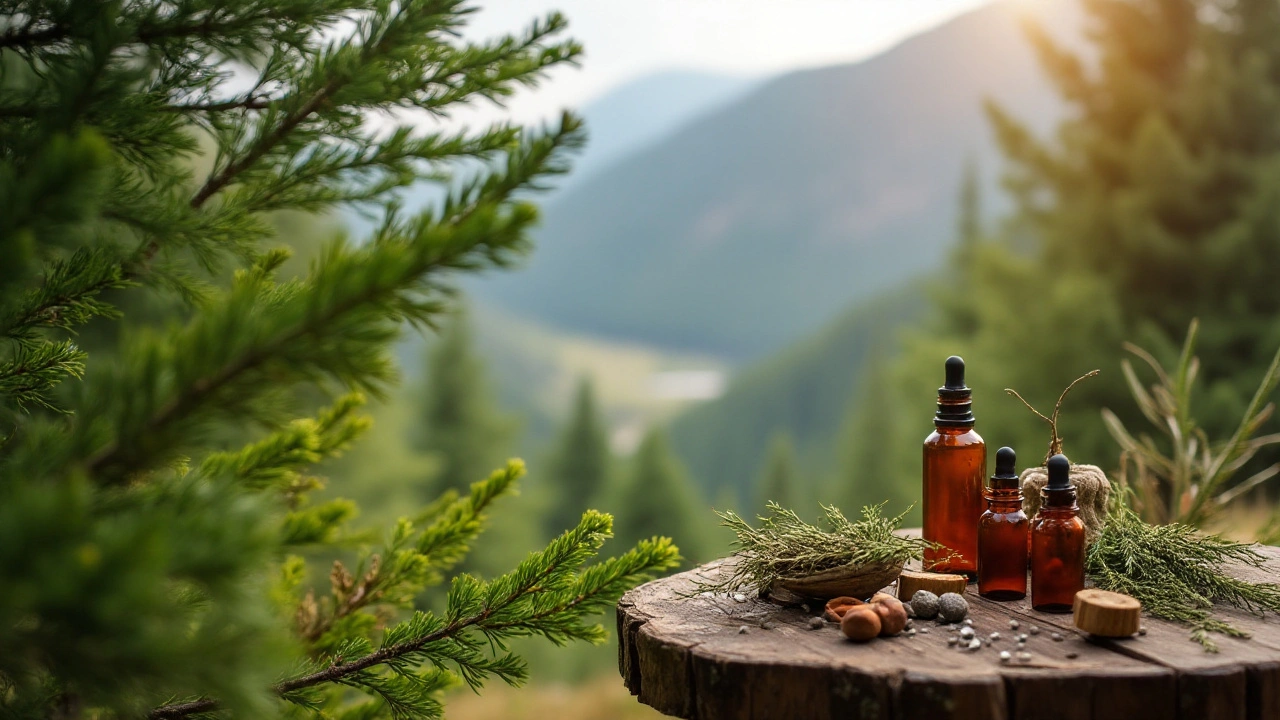Fir benefits: health, home and simple uses
Ever smelled a fir tree and felt calmer? That fresh, resinous scent does more than remind you of winter. Fir benefits range from easing tight chests and sore muscles to freshening rooms naturally. Below are practical ways people use fir needles, resin and essential oil, plus clear safety tips so you can try them at home.
Top health uses
Fir essential oil works well for quick breathing relief. Add 3–5 drops to a bowl of hot water and inhale the steam for a few minutes to help clear nasal congestion. For a gentler option, make a needle tea: steep a small handful (about 1–2 tbsp) of fresh fir needles in a cup of hot water for 8–10 minutes. Strain and sip warm — it’s a soothing drink when your throat feels scratchy.
Muscle and joint relief is another common use. Dilute fir oil in a carrier like almond or olive oil (about 2–3 drops of fir oil per teaspoon of carrier) and massage into sore areas. People also add 5–10 drops to a warm bath for full-body relaxation and to ease stiffness after exercise.
Fir resin has mild antiseptic properties. Small amounts of cleaned resin have been used topically for minor cuts or to keep wounds tidy, but always clean the area first and avoid using resin on deep wounds. When in doubt, see a healthcare provider.
How to use fir safely
Use common-sense precautions. Essential oils are strong: never apply undiluted fir oil to skin and avoid eyes and broken skin. Do a patch test on your inner forearm before larger use. Pregnant women, nursing mothers and children under two should skip fir oil unless a doctor says it’s okay.
If you brew needle tea, stick to small amounts and don’t overdo it — herbs can be useful but aren’t free of effects. If you have high blood pressure, heart issues, or take regular medication, check with your doctor before trying fir remedies.
Want home uses beyond health? Tie bundles of dried fir needles for natural drawer sachets, or simmer a pot of water with a few sprigs and citrus peels to freshen the house without aerosol sprays. Fir wood and branches also make sturdy craft materials and fragrant firewood for cool evenings.
Practical tip: identify your species. True firs (Abies) have flat needles and a distinct fragrance; other conifers can look similar but have different properties. If you forage, confirm ID with a field guide or an expert.
Curious to try fir? Start small: one cup of needle tea or a single diluted topical application. Observe how you feel, and increase only if there’s no irritation. Fir benefits are easy to test at home and can add natural, practical options to your first-aid and wellness toolbox.






